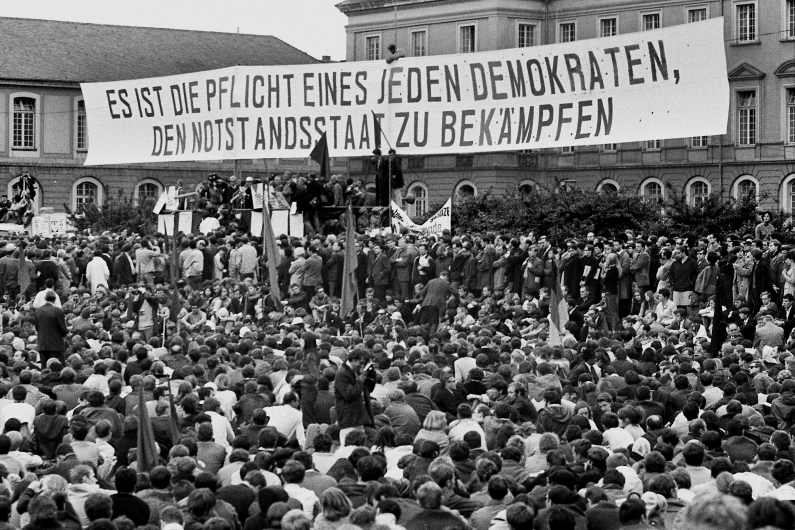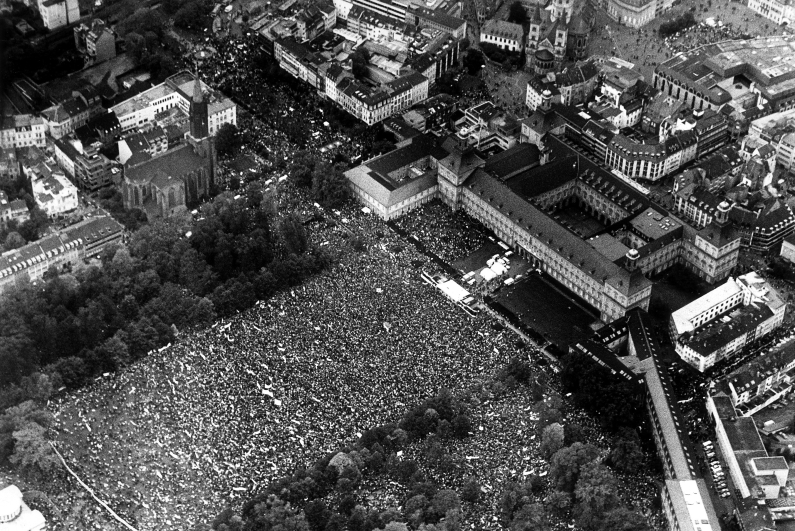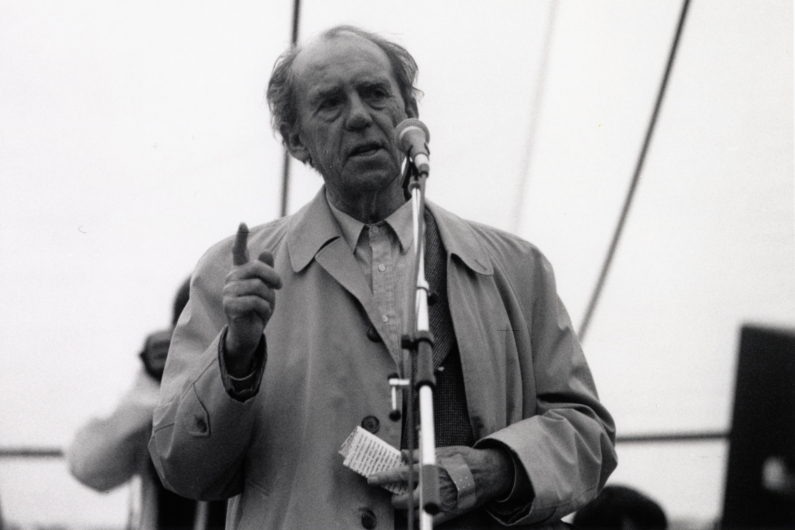In August 1760, Prince-elector Clemens had a baroque garden planted in front of the Electoral Palace. It was ceded to the newly founded Bonn University in 1818. Located in the heart of the city and lined with rows of trees on either side, the Hofgarten is the ideal venue for rallies and demonstrations of all kinds. It is located at the edge of the Bannmeile – the restricted area around government buildings where public meetings and marches are prohibited, which extends from the government district to Weberstraße and Zweite Fährgasse. Plus the Bonn central station is right nearby.
Thus rallies and marches have been held in Bonn have traditionally not been limited to the German student movement or peace-movement demonstrations in the 1960s and 1970s – or to the Hofgarten. For example, on 10 December 1963 some 30,000 war invalids marched through the city to demand increased government funding for themselves and millions like them. And in 1984 alone, according to the Bonn police there were 420 public meetings and marches of every description in the city.
But of all these Hofgarten events, only four are have made it into the history books. On 21 May 1968, four weeks after activist Rudi Dutschke was shot by a would-be assassin in Berlin, more than 20,000 demonstrators gathered to protest against the infringements of civil rights that were expected to result from passage of the German Emergency Acts by the Grand Coalition.
A journalist for the newspaper Die Zeit reported feeling moved by this “emergency happening” – upon seeing a protest march “come to an abrupt halt at a red light; and when the light turned green, they immediately proceeded, at a trot, chanting Ho Ho Ho Chi Minh. […] The columns of demonstrators converged at the Hofgarten. Amongst the trees a sea of heads swayed, and above them there were red flags and banners emblazoned with anti-state of emergency slogans. One banner said, ‘Democracy’s a no-go without the Communist Party’, while another contained a depiction of Rudi Dutschke that evoked the head of Christ. According to police estimates, the demonstrators numbered 25,000 – but the organisers put the number at 70,000.”


